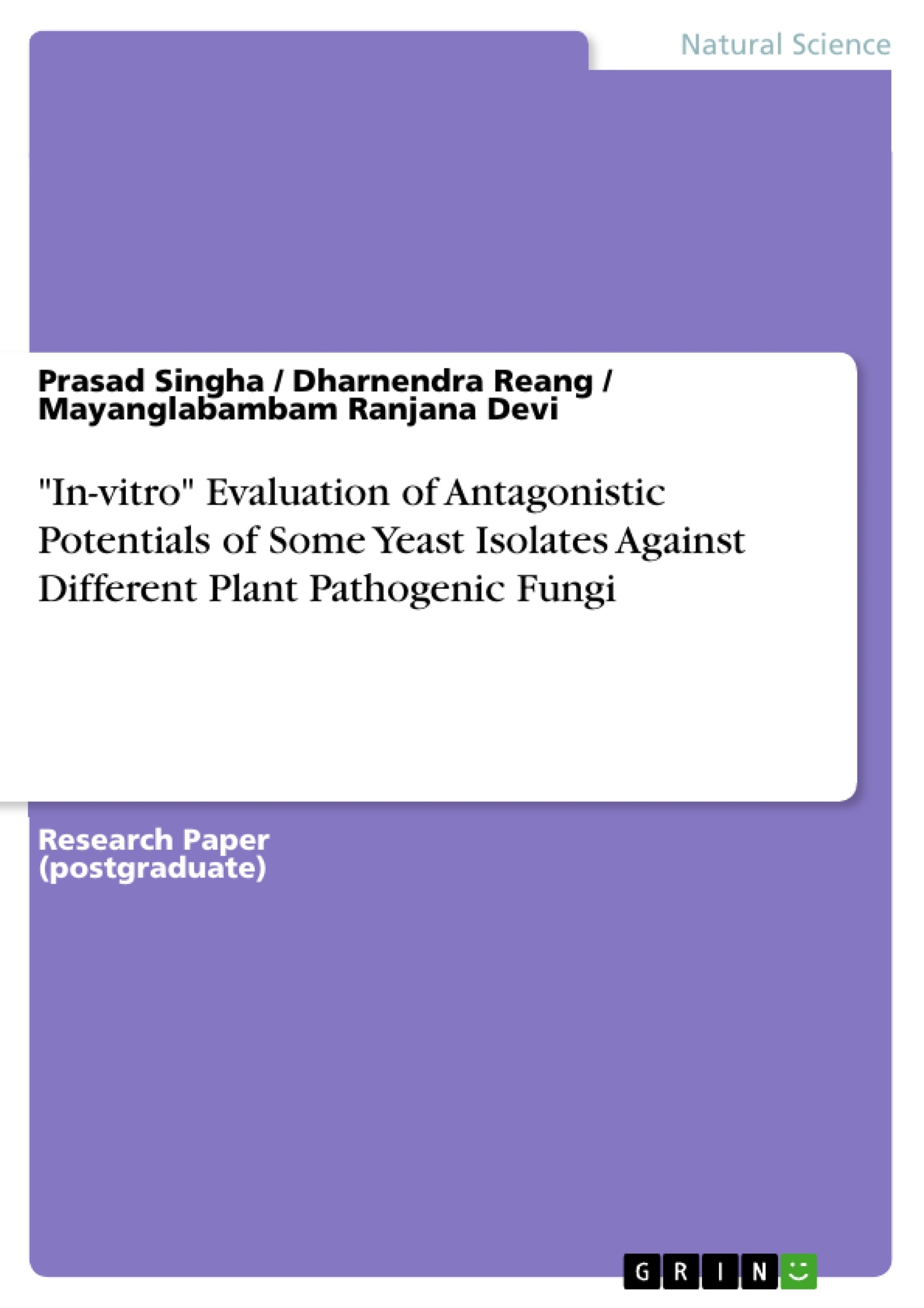Research on the control of plant diseases by phyllosphere applied biological control agents has produced a wealth of informations on a wide range of fungal and bacterial biocontrol agents and their applications for controlling diseases affecting leaves, flowers and fruits. Research into their mode of action and ecological adaptation has provided critical insights that have increased commercial utilization of phyllosphere applied biocontrol agents has proven to be challangeing because the leaf surface presents a relatively hostile environment for introduced microbes with a relative paucity of available nutrients, wide water availability fluxes, direct exoposure to ultraviolet radiation and infrared radiation and competition with other phyllosphere colonist.
Foliar applied biocontrol agents do not have the avoidance strategy of endophytic growth available to pathogens and therefore must primarily utilize a tolerance strategy whereby they colonise and survive on the leaf surface or in protected sites that may or may not be the same as the pathogen they are intended to control. Because of the variable effects of the biological and physical environment, the vast majority of phyllosphere applied biocontrol agents research has been focused on glasshouse or storage environment wherethe physical environment is more predictable and stable.
Many of the early studies aimed at the study of the mode of action and evaluation of the efficacy of some potential biocontrol bacteria, such as Brevibaccilus subtilis, producer of antibiotics, however, the application of such bacteria on fruit did not prove to be commercially acceptable. Wilson and Wisniewski indicated the following characteristics of an ideal antagonist: genetic stability, efficacy at low concentrations and against a wide range of pathogens on various fruit products, simple nutritional requirements, survival in adverse environmental conditions, growth on cheap substrates in fermenters, lack of pathogenicity for the host plant and no production of metabolites potentially toxic to humans, resistance to the most frequently used pesticides and compatibility with other chemical and physical treatments. Yeasts seem to possess a good number of the above mentioned features and during the last few years, research has been made on the selection and study of yeasts.
Inhaltsverzeichnis (Table of Contents)
- Introduction
- Materials and methods
- Results and Discussions
- Against Colletotrichum musae
- Against Rhizoctonia solani
Zielsetzung und Themenschwerpunkte (Objectives and Key Themes)
This research aims to evaluate the antagonistic potential of different yeast isolates against various plant pathogenic fungi, with a focus on their efficacy as biological control agents in post-harvest disease management.
- Antagonistic activity of yeasts against plant pathogenic fungi
- Efficacy of biological control agents in post-harvest disease management
- Inhibition of fungal growth and sporulation by yeast isolates
- Selection and evaluation of potential biocontrol agents
- Development of effective strategies for controlling plant diseases
Zusammenfassung der Kapitel (Chapter Summaries)
- Introduction: This section provides a background on the use of biological control agents, particularly yeasts, to manage plant diseases. It highlights the challenges of using biocontrol agents in the phyllosphere and emphasizes the need for effective strategies in controlled environments like glasshouses and storage.
- Materials and methods: The study utilized a dual culture technique to assess the antagonistic potential of 38 yeast isolates against four plant pathogenic fungi: Colletotrichum musae, Alternaria solani, Rhizoctonia solani, and Fusarium oxysporum f.sp.ciceri. This involved measuring fungal growth inhibition in dual culture plates and categorizing the antagonistic potential of each yeast isolate.
- Results and Discussions:
- Against Colletotrichum musae: The study identified five yeast isolates that exhibited significant inhibitory effects on C. musae growth in dual culture plates. Y22 showed the highest inhibition percentage, followed by Y4. The chapter details the observed growth inhibition and sporulation patterns of C. musae in the presence of different yeast isolates, including microscopic observations of inhibited hyphae. It also discusses the importance of using a modified PDA medium supplemented with yeast extract for optimal growth of both yeasts and fungi.
- Against Rhizoctonia solani: The results demonstrate the significant inhibitory effect of the yeast isolate Y7 on R. solani growth and sclerotia formation in dual culture plates. Other yeast isolates like Y33 and Y22 also showed moderate inhibition. The chapter presents a detailed analysis of the growth and sclerotial formation of R. solani in the presence of different yeast isolates.
Schlüsselwörter (Keywords)
This study focuses on the antagonistic potential of yeasts against plant pathogenic fungi, exploring their efficacy as biocontrol agents in post-harvest disease management. The primary keywords include dual culture technique, antagonistic yeasts, bio-control efficiency, plant pathogenic fungi, Colletotrichum musae, Rhizoctonia solani, Alternaria solani, Fusarium oxysporum f.sp.ciceri, growth inhibition, sporulation, and modified PDA medium.
- Citar trabajo
- Prasad Singha (Autor), Dharnendra Reang (Autor), Mayanglabambam Ranjana Devi (Autor), 2010, "In-vitro" Evaluation of Antagonistic Potentials of Some Yeast Isolates Against Different Plant Pathogenic Fungi, Múnich, GRIN Verlag, https://www.grin.com/document/380446



